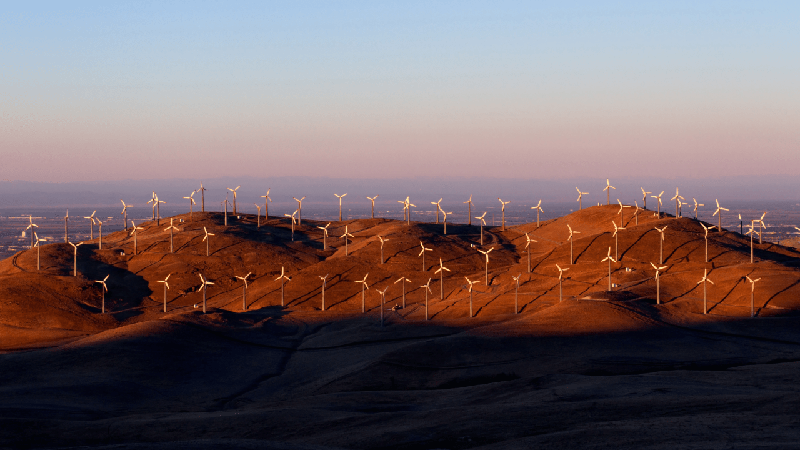New legislation accelerates California's self-mandate to convert to a carbon-free electrical grid by 2045. But can the state actually do it?

Photo by sumikophoto, Shutterstock
By DAN WALTERS, CalMatters
As California baked under record-high temperatures last Tuesday and the state’s residents turned up their air conditioners to cope, electricity consumption hit an all-time peak.
The record demand of more than 52,000 megawatts was experienced in the 80% of the state’s electric power system managed by the Independent System Operator and was a successful stress test for the grid.
Californians heeded pleas to minimize consumption in the all-important late afternoon and evening hours, thus averting rolling blackouts that grid managers had feared would be needed to avoid systemic collapse. Luck also played a role – no major power plant shutdowns – as did having a healthy amount of reserve generation.
Last Tuesday, when power consumption peaked in the late afternoon, renewable sources, principally solar panels, supplied just over a quarter of ISO-managed juice
By happenstance, Tuesday’s test of the power grid’s resilience came just a few days after the Legislature passed – at Gov. Gavin Newsom’s behest – legislation to speed up California’s conversion to a carbon-free electrical grid by 2045. So the day’s experience provided a graphic snapshot of what must to happen for that conversion to occur.
The legislation, Senate Bill 1020, requires that California get 90% of its power from renewable sources by 2035 – the same year the state is now scheduled to end sales of gasoline-powered cars – and 95% by 2040 while retaining the 2045 deadline for converting to a carbon-free electrical grid.
Last Tuesday, when power consumption peaked in the late afternoon, renewable sources, principally solar panels, supplied just over a quarter of ISO-managed juice, while plants powered by natural gas were producing nearly half. Later, as the sun began to set, solar arrays generated steadily less power, finally tapering off to zero, while the gas plants’ share of the load increased rapidly.
Climate scientists tell us that that Tuesday’s experience, including elevated demands on the grid, will become more common. Meanwhile, California theoretically will, in just 13 years, more than triple its proportion of renewable power production.
But there’s more. Power demand will not only increase due to climate change, but because California will be shifting everything it can from hydrocarbons to electricity.
The state now has a few battery banks to preserve solar power but scaling up will be enormously difficult and expensive.
Meeting ambitious goals for zero-emission cars – the vast majority of them powered by batteries – will require much more power to recharge them so that Californians can continue to drive almost a billion miles a day. Simultaneously, the state wants to phase out gas-powered home appliances and other devices, such as lawn mowers, and replace them with electric models.
The sharp decline in solar power in late afternoon and early evening hours also requires banking renewable juice when it’s available so that the grid can continue to meet overnight demand – such as recharging the 30 million or so battery-powered cars we will be compelled to buy.
The state now has a few battery banks to preserve solar power but scaling up will be enormously difficult and expensive and at the moment there are few alternatives.
Finally, the grid itself – the massive complex of high-voltage lines linking generators and importing power from other states – will need upgrading, not only to handle the conversion of power sources, but to meet rising demands and to prevent failures that cause wildfires.
Is California really up the task that the new legislation mandates, a very expensive, relatively rapid conversion and expansion of this immensely complicated and absolutely vital thing we call the grid?
Recent history is not reassuring. This is a state government that took a quarter-century to replace one third of the San Francisco-Oakland Bay Bridge after the 1989 Loma Prieta earthquake, has been futzing around with a bullet train project for 14 years with little progress, and has dozens of bollixed information technology projects.
Electric power transformation would be infinitely more difficult than any of those.
CalMatters.org is a nonprofit, nonpartisan media venture explaining California policies and politics.